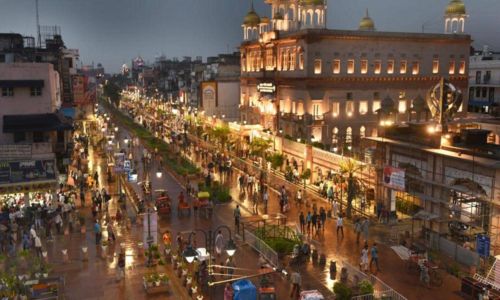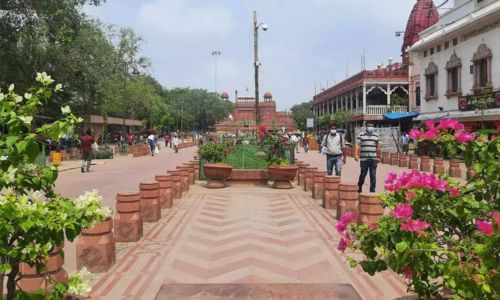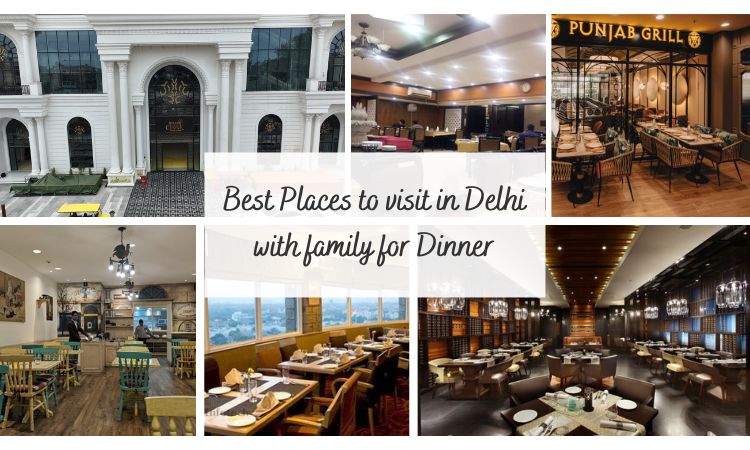Chandni Chowk is a bustling market in Old Delhi, India. It is one of the oldest and largest markets in Asia and is known for its wide variety of goods and services. Chandni Chowk is a great place to experience Indian culture and history and find unique souvenirs and gifts.
Brief about India’s Rich Heritage of Chandni Chowk
India has a remarkably diverse and rich past that dates back thousands of years and has captured the attention of people all over the world. India is a treasure trove of history, with its ancient civilization, historical sites, and vibrant culture.
Chandni Chowk, a humming and dynamic market situated in the centre of Old Delhi, is one enduring representation of India’s past. Heritage of Chandni Chowk provides a glimpse into the splendour and grandeur of India’s past with its winding lanes, humming shops, and historic architecture. Shah Jahan’s establishment of the market in the 17th century has seen centuries of trade, cultural exchange, and historical occurrences.
Today, it is still a hive of activity that draws both tourists and locals who come to explore its labyrinthine alleys, eat delicious street food, and shop for customary clothing, jewellery, and handicrafts. Chandni Chowk captures the spirit of India’s illustrious past by fusing the vivacity of contemporary India with old-world charm.
Tale of Asia’s Biggest Shopping Hub
Chandni Chowk, which is located in the centre of Old Delhi, serves as a reminder of the vibrant culture and lengthy history of the Indian subcontinent. Omaxe Chandni Chowk has become Asia’s busiest shopping district thanks to its congested bazaars, winding lanes, and stunning architectural features. It draws both locals and tourists.
Chandni Chowk got its start in the 17th century, when Shah Jahan, the Mughal emperor, made Shahjahanabad, a walled city, his capital. With its elegant shops and opulent mansions, Chandni Chowk, which means “Moonlit Square,” was intended to
be the imperial city’s main thoroughfare. Its name comes from the mesmerising atmosphere created by the moonlight reflecting off a central pool.
Chandni Chowk is still a hive of activity for business today and a haven for shoppers. The streets are crowded with stores and stalls offering a variety of products, from clothing and jewellery to spices and electronics. The Kinari Bazaar, a well-known market for bridal wear, makes it a haven for people looking for traditional Indian clothing. A visual feast awaits you in the shops as you peruse the sarees, lehengas, and sherwanis with their intricate embroidery, sparkling sequins, and vivid hues.
Foodies throng to Chandni Chowk to sample the mouthwatering street fare. A wide variety of flavours and aromas can be found in the region’s renowned culinary delights. Food establishments with a long history can be found all over the small byways.
For example, Karim’s restaurant is renowned for its delectable Mughlai cuisine, while Paranthe Wali Gali is well-known for its mouthwatering parathas. Visitors’ taste buds are always pampered at Chandni Chowk with everything from chaat (savoury snacks) to kebabs and jalebis (sweet treats).
Chandni Chowk is known for its dining, shopping, and architectural marvels that tell the stories of its illustrious past. At one end of the street, a UNESCO World Heritage site known as the Red Fort stands majestically. The Mughal emperors once called this massive fortress home because of its intricate carvings and vast gardens. One of the biggest mosques in India, the Jama Masjid, is nearby. It has a grand courtyard that can hold a large number of worshippers in addition to an impressive red sandstone facade.
The experience of exploring Chandni Chowk immerses visitors in a bygone era. A chaotic yet lively atmosphere is created by the rickshaws, people walking, and vendors crammed into the small lanes. The sensory overload brought on by the sights, sounds, and smells is exclusive to Chandni Chowk. It is a must-visit location for anyone looking for an authentic view of Delhi’s cultural tapestry due to its ageless charm and vibrant energy.
Chandni Chowk is more than just a place for shopping; it is a physical representation of Delhi’s past, present, and future. It is a location where tradition and modernity seamlessly coexist side by side. Whether you enjoy history, shopping, or food, Chandni Chowk offers a magical experience that will leave you with priceless memories and a desire to go back repeatedly.
Top Reasons to Visit Chandni Chowk
Shopping Extravaganza: Chandni Chowk is a well-known market that is one of the biggest and oldest in Asia, making it a haven for retail therapy. Traditional Indian clothing, jewellery, spices, electronic devices, and a wide variety of other goods are all available in the market. Chandni Chowk is the perfect place to shop for priceless textiles, intricate crafts, or one-of-a-kind trinkets.
Culinary Delights: With a wide variety of street food vendors and well-known restaurants, Chandni Chowk is a food lover’s paradise. The food options are truly delectable, from the mouthwatering parathas at Paranthe Wali Gali to the delicious kebabs at Karim’s. Make sure to sample popular street foods like chaat, samosas, kachoris, and jalebis. You’ll want more after tasting the flavours and aromas of the food at Chandni Chowk.
Rich Architectural History: Entering Chandni Chowk is like travelling back in time. The iconic Red Fort and the Jama Masjid are just two of the grand historical structures that line the market’s winding lanes. You can immerse yourself in the city’s rich history and take in the magnificence of Mughal-era architecture by exploring the architectural wonders of Chandni Chowk.
Cultural Immersion: Chandni Chowk is a nexus of numerous ethnic communities and cultures. The market’s lively atmosphere, busy streets, and vibrant festivals give visitors a sense of Delhi’s cultural diversity. You can engage with locals, participate in religious celebrations, observe customary ceremonies, and learn more about the city’s rich history.
Most Recommended Chandni Chowk Religious & Spiritual Activities
1.) Jama Masjid
The magnificent Jama Masjid, India’s largest mosque. It is located in the centre of Old Delhi and displays the Mughal dynasty’s splendour. It served as the Mughal Empire’s primary place of prayer and imperial mosque. The stunning red sandstone and white marble structure with its two 40-meter-high minarets and bulbous domes will take your breath away.
2.) Gauri Shankar Temple
The Gauri Shankar Temple is situated in Chandni Chowk, near the Red Fort in New Delhi. This is an ancient temple in Delhi. One of Delhi’s oldest Shivalayas (Shiv temples). White marble with a silver coating on top. The
temple contains a brown lingam that is supposed to be 800 years old. The lingam is encased in a marble construction that represents the female organ.
Lord Shiva, Goddess Parvati, Lord Kartik, and Lord Ganesh are worshipped in the main temple.
3.) Sis Ganj Sahib
This Gurudwara represents the triumph of good over evil. The Mughals executed Guru Teg Bahadur, the 9th Sikh Guru, and some of his disciples, including Bhai Mati Das, Bhai Dyal Das, and Bhai Sati Das, in 1675. In 1783, after taking Delhi, the Mughal capital at the time, the Khalsa built the Gurudwara as a tribute.
Conclusion
Chandni Chowk is a remarkable place that captures the spirit of India’s rich heritage and proudly claims the title of Asia’s largest shopping district. An unforgettable experience that combines history, culture, and brisk trade is provided by this bustling market, which is tucked away in the centre of Old Delhi. Omaxe Chandni Chowk is a shopping mecca with a wide variety of stores and stalls that can satisfy any need.
The market’s extensive selection is sure to pique your interest, whether you’re looking for intricate jewellery, flavorful spices, the newest technology, or traditional Indian clothing. A shopaholic’s fantasy comes true when they have the opportunity to stroll through the crowded lanes, haggle for a good price, and find one-of-a-kind treasures.




